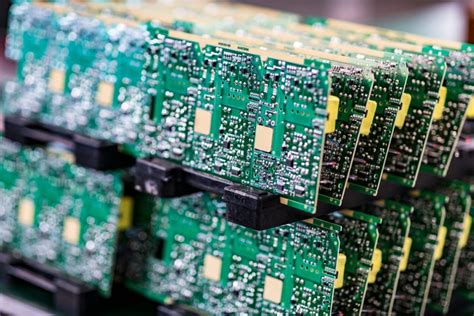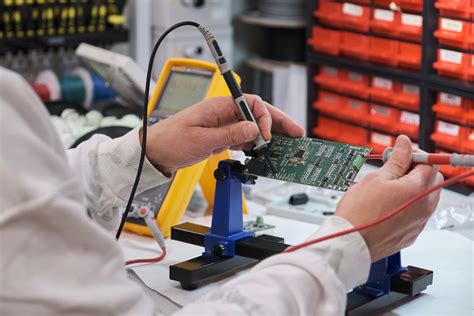Understanding Printed Circuit Assembly Price Factors and Trends
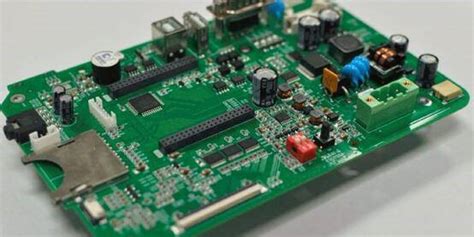
Key Takeaways
Understanding the factors that influence pcb assembly prices is crucial for anyone involved in the electronics manufacturing industry. The landscape of pcba pricing is shaped by several key elements, including raw material costs, labor rates, and production volumes. For instance, the choice of materials can significantly affect the final price of pcb assembly; high-quality components typically come at a premium but can enhance performance and reliability. Additionally, labor costs vary widely across regions, and fluctuations in these rates can directly impact production expenses. Production volume plays a vital role as economies of scale can lower the pcba price per unit; higher volume orders often lead to reduced costs. Furthermore, keeping an eye on market trends is essential to develop effective pricing strategies that respond to shifts in demand and competition.
"Staying informed about the dynamics of pcb assembly pricing enables manufacturers to make strategic decisions that align with their business goals."
In navigating these complexities, it is important to regularly assess not just current costs but also anticipated changes in the market landscape to maintain a competitive edge. By understanding these factors comprehensively, stakeholders can engage more effectively with suppliers and customers alike.

Introduction to Printed Circuit Assembly Pricing
Understanding the pricing dynamics of pcb assembly is essential for companies seeking to optimize costs while ensuring high-quality production. Several key factors play a role in determining the pcba prices, including raw material costs, labor rates, production volume, and market trends. The complexity of the assembly process contributes significantly to cost variations. For instance, specialized materials such as high-frequency laminates or flexible substrates can inflate prices due to their unique properties and limited availability. Labor rates are another critical component; skilled labor is often required for intricate assemblies like multi-layer boards or those with advanced features.
Additionally, production volume has a profound impact on pricing—higher volumes typically lead to economies of scale that can lower unit costs. Conversely, low-volume runs might increase per-unit expenses due to setup costs and inefficiencies. The current market trends also shed light on pricing strategies employed by manufacturers, as they adapt to fluctuating demands and technological advancements.
To better understand how these factors converge in determining pcb assembly pricing, consider the following table:
| Factor | Impact on Pricing |
|---|---|
| Key Material Costs | Direct correlation with price |
| Labor Rates | Variable depending on skill level |
| Production Volume | Economies of scale applicable |
| Market Trends | Influence on strategic pricing |
This comprehensive perspective allows stakeholders in the electronic manufacturing sector to navigate the often-complex landscape of pcba pricing effectively, positioning them for better decision-making and cost management in their projects.
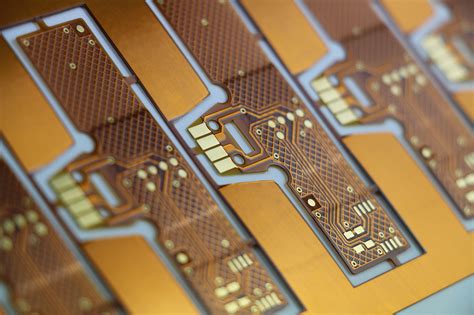
Key Material Costs Affecting PCB Assembly Prices
When it comes to printed circuit board assembly (PCB assembly), the material costs play a crucial role in determining the overall pricing of the PCBA process. The primary components, such as copper, solder paste, and various electronic components, contribute significantly to the total expenditure. Copper prices, for instance, can fluctuate based on global market conditions and demand, affecting the base costs of PCB assemblies. Additionally, the selection of specific materials can vary based on performance requirements and environmental regulations, further impacting price. Moreover, high-quality components may incur a premium but can enhance durability and performance in the end product. Manufacturers must also consider auxiliary materials like laminates and protective coatings that are essential for achieving desired operational standards. The interplay between these material choices not only affects production costs but also influences lead times and inventory management strategies. Consequently, understanding these key material costs is vital for companies seeking to optimize their pricing strategy in an increasingly competitive landscape for printed circuit board assemblies.
The Impact of Labor Rates on Assembly Expenses
Labor rates play a significant role in determining the overall expenses associated with pcb assembly or PCBA. As manufacturers seek to optimize costs while maintaining quality, the balance between labor costs and skill levels becomes crucial. For instance, regions with higher wages often attract skilled labor, which can increase the quality of the product but subsequently raises the pcb assembly price. Conversely, areas with lower labor costs may provide a more economical solution but might compromise on experience or expertise, potentially affecting PCBA quality and reliability. Additionally, factors such as local economic conditions and labor availability can cause fluctuations in labor rates that directly impact assembly expenses. Companies must assess these labor-related costs comprehensively and strategically to navigate the complexities of pcb assembly pricing effectively. By understanding their specific needs in terms of skill diversity and production requirements, businesses can make informed decisions that align both cost and quality to meet their market demands efficiently.
How Production Volume Influences PCB Pricing
Production volume plays a crucial role in determining pcb assembly prices, as it directly impacts both material and labor costs. Typically, when production volume increases, manufacturers can achieve a greater economy of scale. This means that the fixed costs of production are spread over a larger number of units, effectively lowering the cost per unit. For instance, bulk purchasing of components can lead to discounts, thus reducing overall material expenses associated with pcba. Additionally, higher volumes often streamline labor processes and manufacturing timelines, allowing companies to allocate resources more efficiently.
Conversely, lower production volumes can result in higher per-unit costs due to inefficiencies and the inability to take advantage of bulk pricing for materials. Smaller runs often require more setup time and adjustment periods in production lines, which can raise labor rates significantly for each unit produced. Thus, businesses operating in the realm of pcb assembly must carefully assess their production needs against potential pricing implications to remain competitive in the market. Understanding how production volume influences pricing not only aids in budgeting but also helps manufacturers make informed decisions about order sizes and overall operational efficiency.
Market Trends and Their Effect on Pricing Strategies
Understanding the market trends surrounding pcb assembly is essential for businesses looking to set competitive pricing strategies. As technology evolves, there is a shift in consumer demands, influencing the direction and scale of production. For instance, the rise of smaller electronic devices has led to an increased demand for miniaturization in pcba, thereby affecting both the complexity of the assembly process and material selection. Consequently, these trends can lead to fluctuations in prices. Manufacturers must remain vigilant about these changes to adapt their pricing strategies effectively. Additionally, external factors such as economic conditions, geopolitical tensions, and supply chain disruptions can further complicate pricing dynamics. Therefore, staying abreast of current market trends will enable businesses to develop agile strategies that not only address immediate cost concerns but also position them favorably in a rapidly changing marketplace. Embracing innovation while monitoring these trends ensures that companies remain competitive and can optimize their pcb assembly pricing in alignment with market demands.
Competitive Landscape in Printed Circuit Assembly Pricing
The pcb assembly industry is marked by a dynamic and competitive landscape that significantly influences pricing strategies. Various companies strive to differentiate themselves, not just through quality but also by managing costs to remain competitive in an ever-evolving marketplace. One fundamental aspect impacting pcba prices is the sheer volume of production; firms that can achieve larger production runs often benefit from economies of scale, thereby reducing the per-unit cost of assembly. Additionally, the competition among suppliers for materials plays a pivotal role. Suppliers are constantly adjusting their prices based on demand and availability, affecting overall assembly costs. As manufacturers aim to optimize their pcb assembly processes, they are also exploring innovative technologies to enhance efficiency and reduce costs. This competitive drive fosters an environment where prices fluctuate in response to market pressures, labor costs, and material availability. Staying informed about these trends not only helps businesses navigate the pcba pricing landscape but also positions them strategically in a marketplace defined by rapid innovation and changing consumer demands.
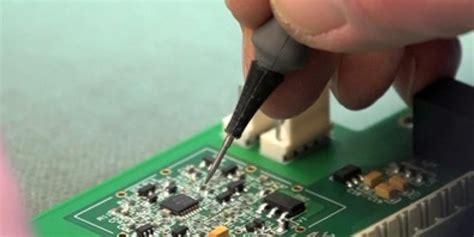
Strategies for Navigating PCB Assembly Costs
Navigating the complexities of pcb assembly costs requires a strategic approach that accounts for various influencing factors. First and foremost, understanding key material costs is essential, as these can significantly impact the overall expenditure of a pcba project. Sourcing high-quality materials at competitive prices can result in substantial savings without compromising on performance or reliability. Additionally, companies should regularly evaluate labor rates in their chosen production locales; fluctuations in these rates can directly affect assembly expenses and project budgets.
Another critical aspect is assessing production volume, as larger orders often lead to lower per-unit costs due to economies of scale. This point illustrates the importance of planning ahead—balancing immediate needs with potential bulk orders can enhance cost-efficiency. Furthermore, keeping abreast of market trends allows businesses to identify opportunities for leveraging emerging technologies and methodologies that may reduce costs in the long run. By incorporating these strategies, stakeholders can not only manage their pcb assembly expenditures more effectively but also position themselves favorably within the competitive landscape of pcba manufacturing. Prioritizing these various factors will ultimately empower decision-makers to make informed choices that align with their operational goals and budgetary constraints.
Future Trends in Printed Circuit Assembly Prices
As the electronics industry continues to evolve, pcb assembly prices are likely to be influenced by several emerging trends. One significant factor is the rapid advancement in technology, which often leads to enhanced manufacturing processes and materials. For instance, the adoption of automation and smart manufacturing techniques can potentially lower production costs, resulting in more competitive pcba pricing. Furthermore, the increasing demand for miniaturization in electronic components pushes manufacturers to invest in more sophisticated equipment and materials, which may initially raise production expenses but could stabilize prices in the long run as technology matures.
Additionally, ongoing shifts toward sustainability are likely to impact pcb assembly costs. The need for eco-friendly materials and processes may introduce new pricing structures as companies adapt to regulatory changes and consumer preferences. Moreover, geopolitical factors could play a key role in shaping the marketplace; for instance, tariffs or trade agreements may affect both material costs and labor rates, prompting companies to reassess their pricing strategies for pcba services.
Lastly, monitoring market demand is crucial since fluctuations can significantly impact pricing dynamics. As industries like automotive and consumer electronics thrive or decline, this will directly affect pcb assembly volumes and pricing strategies across different sectors. In conclusion, understanding these future trends will be essential for companies looking to navigate the competitive landscape of pcba effectively.
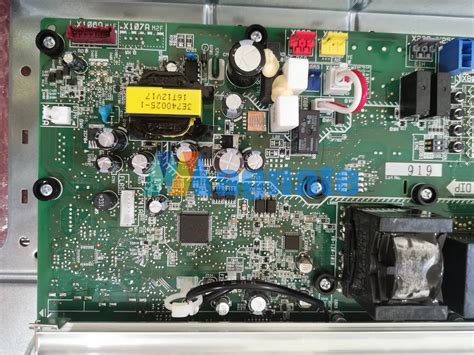
Conclusion
As we wrap up our exploration of the printed circuit assembly (PCA) price dynamics, it’s essential to recognize the multifaceted nature of PCB assembly costs. Understanding these costs requires careful consideration of various elements including material prices, labor rates, and production volumes. Each aspect plays a critical role in shaping the overall expenses associated with PCBA processes. For example, fluctuations in material costs can significantly affect the price structure; the choice of substrates and components can lead to variations that (if unmonitored) may impact production budgets. Furthermore, labor rates can vary widely based on geographic location and skill levels, which inherently adds layers of complexity to pricing strategies. Moreover, production volume plays a crucial role in cost efficiency; larger batches often reduce per-unit expenses, making it vital for companies to assess their manufacturing needs strategically. As market trends continue to evolve, maintaining an adaptable pricing strategy becomes necessary for competitiveness in the PCB industry. Consequently, navigating these influences effectively can empower organizations to optimize their PCBA processes and align pricing with market demands seamlessly.

FAQs
What are the main factors that influence pcb assembly prices?
The pcb assembly prices are primarily influenced by key material costs, labor rates, and production volume. Changes in the cost of raw materials and components directly affect the pricing of pcba services.
How do labor rates impact pcba costs?
Labor rates play a crucial role in pcb assembly expenses. Higher wage demands in regions with a skilled workforce can lead to increased overall costs for assembly services.
Does production volume affect the price of pcb assembly?
Yes, production volume has a significant impact on pricing. Larger production runs often lead to economies of scale, resulting in lower per-unit costs for pcba services.
What market trends should I be aware of when considering pcb assembly?
Market trends, such as technological advancements and shifts in consumer demand, can greatly influence pricing strategies for pcb assembly, affecting the availability and cost of materials and labor.
How can I effectively navigate the competitive landscape of pcba pricing?
To navigate the competitive landscape effectively, it’s essential to stay informed about industry developments, understand your suppliers’ pricing structures, and explore various options to enhance your cost-effectiveness without compromising on quality.


